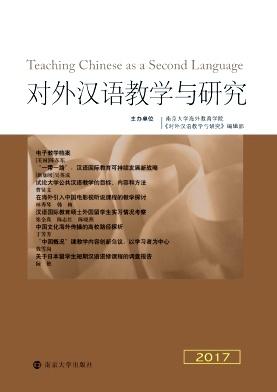Translanguaging and data-driven learning: How corpora can help leverage learners’ multilingual repertoires
引用次数: 0
Abstract
Translanguaging, i.e., the use of multiple languages to make and negotiate meaning, has been shown to be beneficial for language learning (see, e.g., García & Kleifgen, 2020). Although it is a fairly natural and spontaneous phenomenon in the lives of many multilingual speakers, its role is not well established in the language classroom, where the use of learners’ mother tongues (L1s) or some additional languages (L2s) besides the target language (TL) is often frowned upon (by school authorities, teachers, and even students themselves). For this reason, there have been calls to “explore what ‘teachable’ pedagogic resources are available in flexible, concurrent approaches to learning and teaching languages bilingually” (Creese & Blackledge, 2010, p. 113). One such possible resource is the corpus, an electronic database of naturally-occurring language that can be investigated by means of special tools and techniques to gain insights into the language(s) or language variety (varieties) represented in the corpus. What is particularly interesting about corpora from a pedagogical perspective is that they can be used by students to make their own discoveries about language, a pedagogical approach known as ‘data-driven learning’, or DDL for short (see Gilquin & Granger, 2022). In what follows, I review some of the corpora that could be useful in translanguaging pedagogy and briefly show how they could help language learners leverage their own multilingual repertoires.跨语言和数据驱动学习:语料库如何帮助利用学习者的多语言库
译语,即使用多种语言来制造和协商意义,已被证明对语言学习有益(例如,参见García & Kleifgen, 2020)。虽然在许多多语使用者的生活中,这是一种相当自然和自发的现象,但在语言课堂上,它的作用并没有得到很好的确立,在课堂上,使用学习者的母语(l15)或目的语(TL)之外的一些其他语言(L2s)经常遭到学校当局、老师甚至学生自己的反对。出于这个原因,有人呼吁“探索在灵活的、并行的双语学习和教学方法中,哪些‘可教’的教学资源是可用的”(Creese & Blackledge, 2010,第113页)。语料库是一种可能的资源,它是一种自然发生的语言的电子数据库,可以通过特殊的工具和技术来研究,以深入了解语料库中所代表的语言或语言品种。从教学的角度来看,语料库特别有趣的是,学生可以使用语料库来发现自己的语言,这种教学方法被称为“数据驱动学习”,简称DDL(见Gilquin & Granger, 2022)。接下来,我将回顾一些在翻译教学中有用的语料库,并简要说明它们如何帮助语言学习者利用自己的多语言库。
本文章由计算机程序翻译,如有差异,请以英文原文为准。
求助全文
约1分钟内获得全文
求助全文

 求助内容:
求助内容: 应助结果提醒方式:
应助结果提醒方式:


